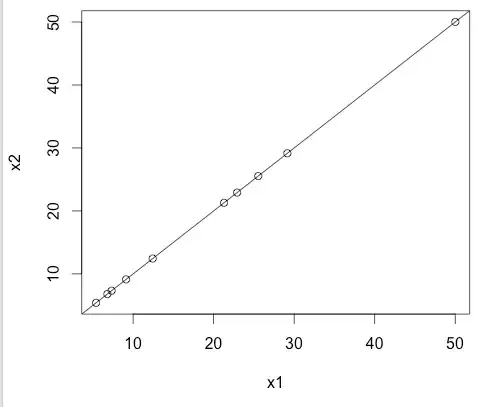Conceptually, aren't the eigenvalues of a correlation matrix and the singular values of the associated scaled data matrix supposed to be the same? The below illustration is saying that it isn't so. Please point out what I am missing.
> M
[,1] [,2] [,3]
[1,] 1 6 11
[2,] 2 7 12
[3,] 3 8 21
[4,] 4 9 14
[5,] 5 10 34
> M.scale = scale(M)
> M.cor.eigen = eigen(cor(M))
> M.prcomp = prcomp(M.scale)
> M.svd = svd(M.scale)
> M.cor.eigen$values
[1] 2.729542e+00 2.704577e-01 1.198779e-16
> M.prcomp$sdev ^ 2
[1] 2.729542e+00 2.704577e-01 5.960165e-34
> M.svd$d
[1] 3.304265e+00 1.040111e+00 1.953076e-16
